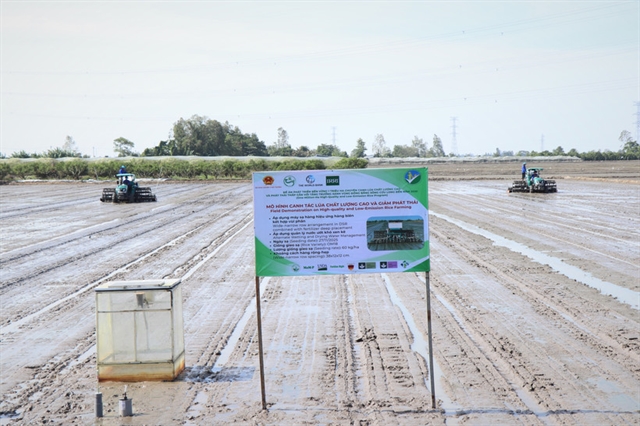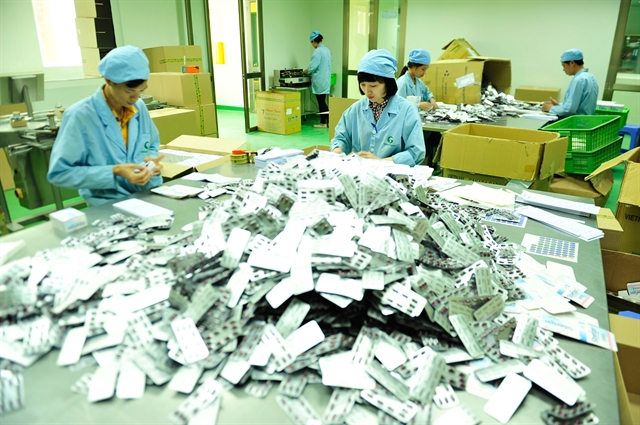 Economy
Economy


|
| Drugs are packed by workers of the Saokim Pharma Company. There have been improvements towards reducing exports of raw materials and shipping more processed products. VNA/VNS Photo Trọng Đạt |
HÀ NỘI —Local businesses should diversify their export promotion activities to increase turnover and expand markets, heard attendants at the Việt Nam Export Promotion Forum 2019 held in Hà Nội yesterday.
Đỗ Thắng Hải, deputy minister of Industry and Trade said in the last few years, Việt Nam’s goods export structure had seen positive changes towards reducing exports of raw materials and shipping more processed products.
This had helped Vietnamese goods participate in the global supply chain and attract foreign investment.
Amid international integration, Việt Nam had signed many free trade agreements, especially with big partners such as South Korea, the European Union and the Eurasian Economic Union.
The CPTPP, which took effect from the beginning of the year, had attracted foreign investors, a boon for exports.
Vũ Bá Phú, Director of the Việt Nam Trade Promotion Agency, stressed the need for enterprises to improve their production capacity and the value of products to meet consumers’ requirements.
Agreeing, Võ Trí Thành, director of Institute for Brand and Competitiveness Strategy, said Việt Nam had opened its market for not only one country but with many across the world.
“Don't look at exports as just markets. In export promotion, the most basic thing is still a partner. Partners must not only export together but also implement promotion activities, creating networks and value chains. Businesses are no longer the centre in trade today but rather a public. These are fundamental changes in production and trade,” Thành said.
He said that with the FTAs Việt Nam has signed, businesses must not only satisfy a series of difficulties such as rules of origin and technical standards, but also be associated with importers, seek markets and implement customer care.
“The concept of exports is no longer limited in the fact that enterprises bring goods to foreign markets. Supplying products to foreign-invested manufacturers like Samsung in Việt Nam is also exports. This is the on-site export method, which is also a way to help Vietnamese enterprises get into the global supply chain,” he added.
Support services like logistics are very limited in Việt Nam. Transport services are mostly exploited by foreign firms, so if local companies could develop this service, Việt Nam will significantly increase its export turnover and growth quality, according to Thành.
The rise of digital trade is key in export trends. In 2017, the value of digital exports reached VNĐ97 trillion (US$4.1 billion). In 2030, the figure is forecast to reach VNĐ652 trillion.
“Digital trade is not merely e-commerce but also a high potential area for Vietnamese enterprises to exploit in the future,” he said.
Global consumption trends have also changed. Consumers are increasingly paying attention to green factors and personality in the product. This makes the market open to green manufacturing industries associated with culture and creative products. At the forum, domestic and foreign economists discussed opportunities and challenges facing Viet Nam’s small- and medium-sized enterprises in global value chains.
They also shared ideas on world market trends, as well as issues Vietnamese enterprises should pay attention to when exporting.
Jonas Grunder, deputy head of the Swiss Co-operation Office under the Swiss Embassy in Việt Nam, said Vietnamese enterprises were facing a lot of challenges related to integration barriers, customs procedures and quality requirements.
They were also not adequately informed on the laws of foreign markets, he added. VNS




